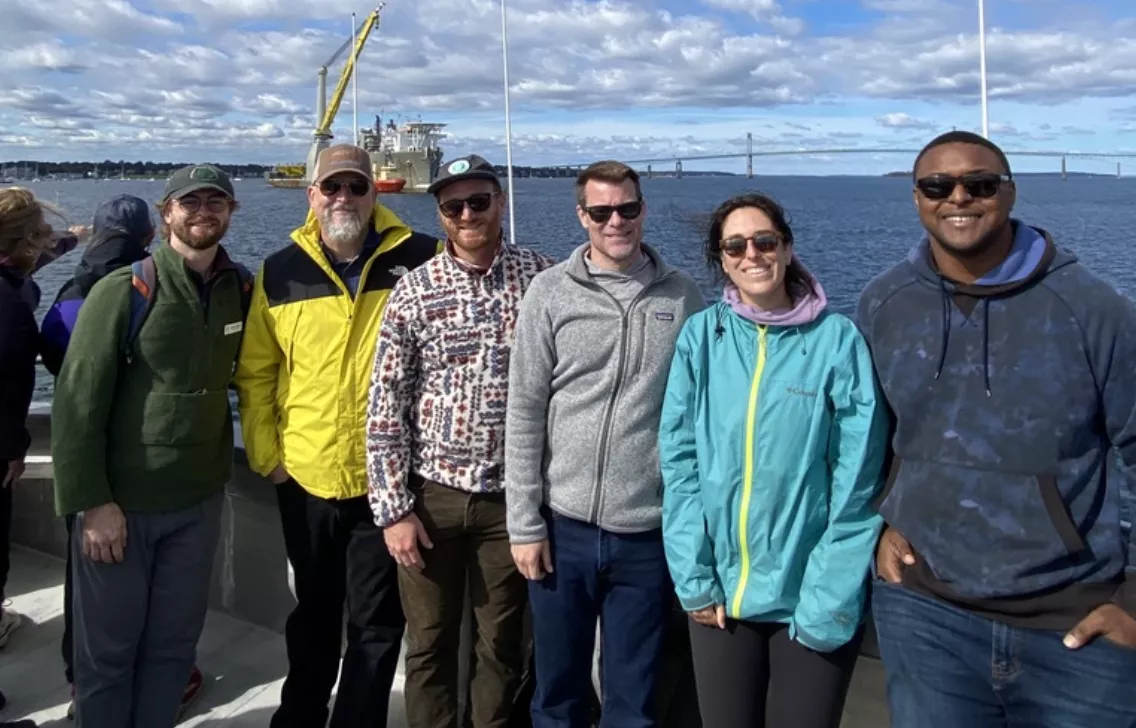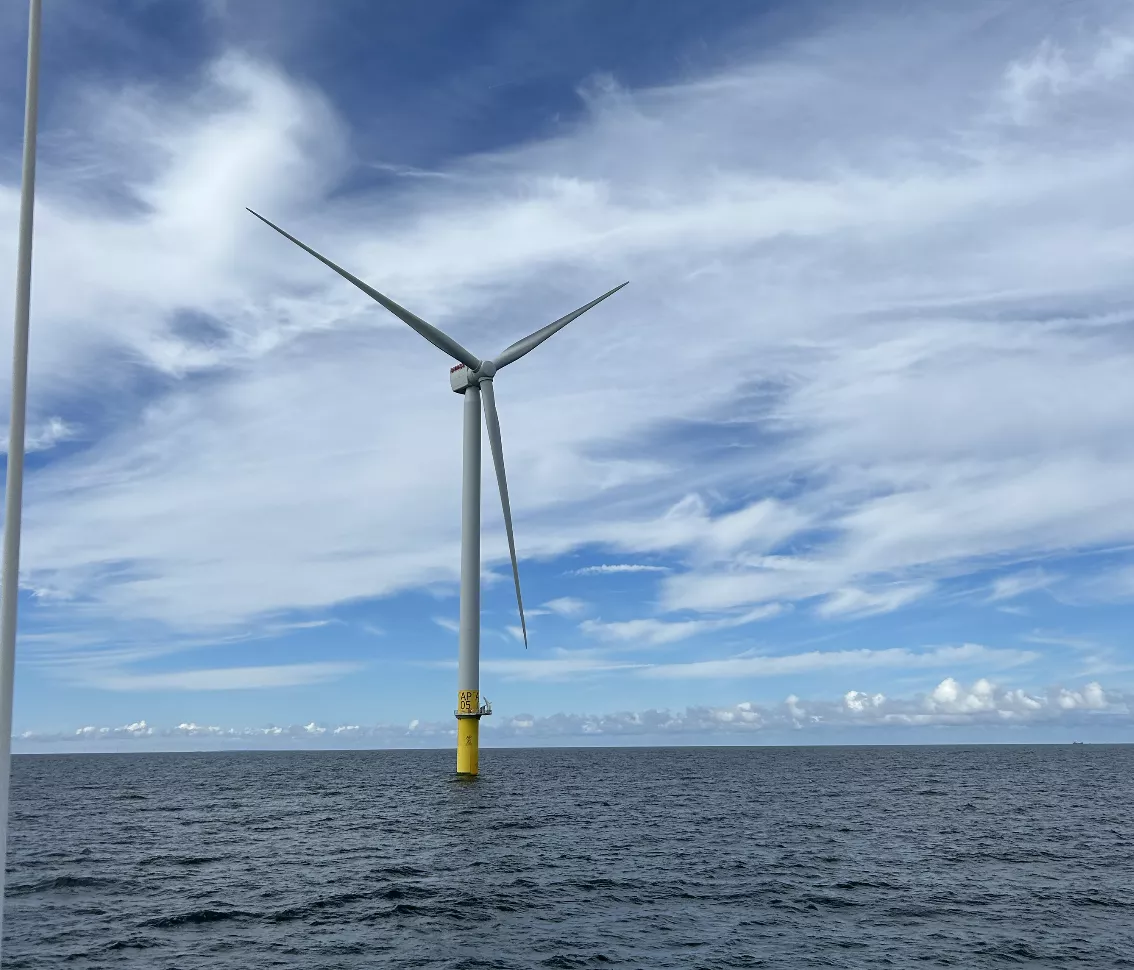
From left: Matt Cannon, State Conservation & Energy Dir.; Dave Rogers, Deputy Dir., Beyond Coal Campaign; Andrew Blunt, Coastal Advocate
On September 30th, Matt Cannon, our State Conservation and Energy Director, and I boarded a ship in South Kingstown, Rhode Island. We were among nearly 100 environmental advocates, policymakers, government staff, and Ørsted employees making our way the sixteen miles offshore to see South Fork Wind.
South Fork Wind is America’s first commercial offshore wind farm. Just off the coast of Newport, RI, the project's 12 turbines generate 132 MW of power for New York State. That's over 72,000 homes per year powered by clean, renewable energy.
We could not have asked for a more beautiful day: the sun was shining, the seas were calm, and the company was great as we motored out to the array aboard the Martha’s Vineyard Rapid Ferry. From shore, South Fork was barely visible, measuring maybe half an inch on the horizon. As South Fork grew larger on the horizon, we started to see signs of a new development nearby–Ørsted’s Revolution project, a 704 MW array that will send power to Rhode Island and Connecticut. Pylons without their windmills could be seen poking above the surface of the water.
Before we knew it, we were among South Fork’s turbines, and it suddenly became clear just how offshore wind generates the amount of electricity that it does. These turbines are huge–their towers are 460 feet tall, and when their blades stand straight up, they reach 780 feet above sea level. What was most awe striking, however, was the peacefulness of the operation–it was quiet, the blades silently spinning, each one mile from the next. Overall, the large turbines appeared to be in harmony with our coastal environment.
Then, the ship captain began peppering us with facts about South Fork, each more staggering than the last: that the tip of one of the blades travels at 200 miles per hour, that one rotation of one of the turbines generates enough power to fully power one home for 24 hours. Among the turbines, you could also see the offshore substation up on its platform, where the power from all of the turbines is gathered to be transmitted to customers on the New York Grid via a high-voltage underwater cable.
Since the needs of Maine’s fishing community are front and center in debates about offshore wind back home, I asked a nearby Ørsted biologist if the waters near the turbines were restricted to public access. They told me that not only were they unrestricted, but that fishermen often fish directly near the turbines since their pylons create artificial habitat. As I was chatting with her, we heard the captain announce that a humpback whale had been spotted near our ship. We rushed to see it, and I managed to catch a glimpse of a fluke and tail.
As we began our ride back to shore, I started to wonder what this industry would look like in Maine. We passed by the original five turbines off the coast of Block Island, America’s first offshore wind turbines that were built in 2016. In one day’s trip, we got to see both the origins and the future of our country’s offshore wind industry.
While there will be differences between South Fork and offshore wind power in Maine–these turbines were fixed to the bottom, while our’s will need to float in our deeper waters–I was inspired by the successes that we saw off of Rhode Island’s coast. Clean offshore wind energy at utility scale, powering homes in some of the most populated areas on the east coast, hundreds of clean energy jobs, and minimal impact on both the environment and the way of life for the local communities.

